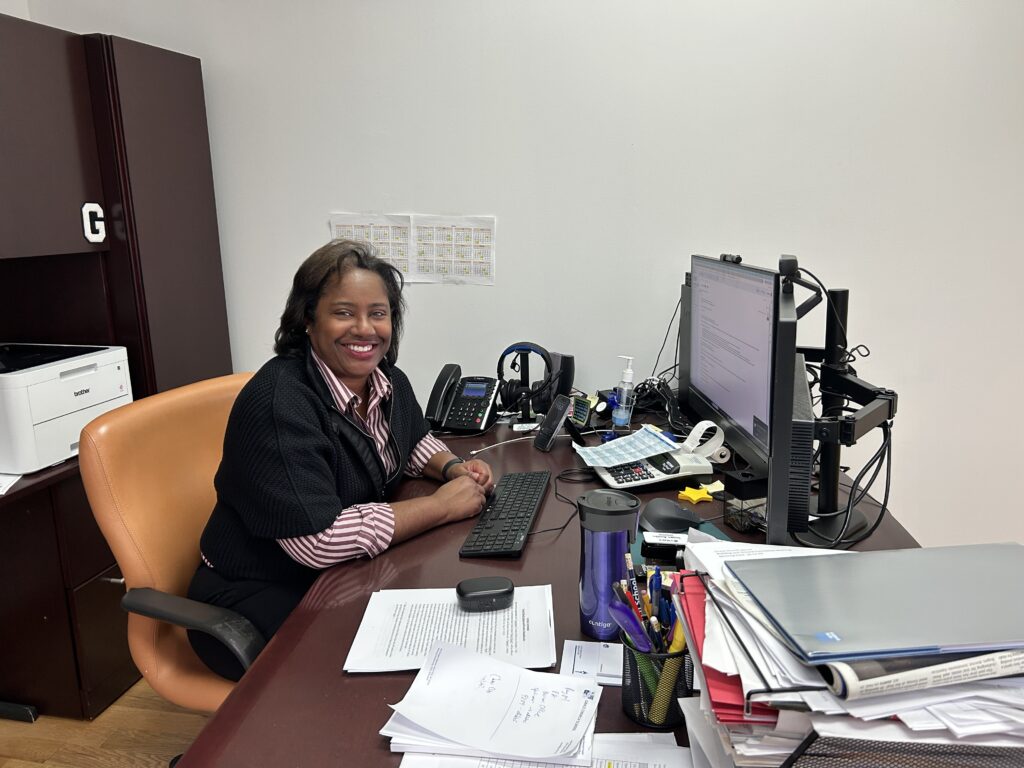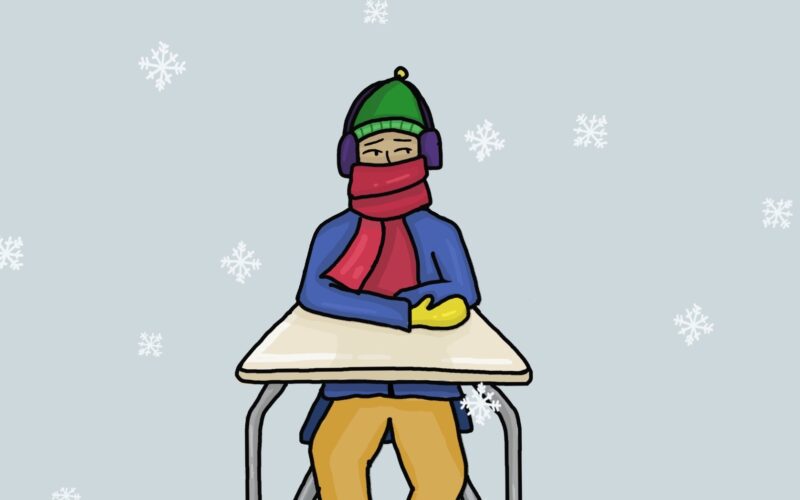Temperature Testers Take on the Tundra
Art by Miranda Chao Hwang ’24
Students attending Grace are often seen sporting long sleeves, oversized sweaters, and fluffy socks. Even in the heat of early September, students were dressed for cold weather. What causes these strange fashion choices?
A common complaint floating around the high school building is the frigid temperature. Friends and classmates often comment on how cold they are in class. In an attempt to decipher whether this complaint is justified, The Gazette decided to see if the temperatures are as chilly as they seem.
On two separate days (October 16th and November 2nd), we tested the temperatures of the building’s floors, walls, and ceilings with a temperature gun. For each location below, we averaged the temperature of the floors, ceilings, and walls for each day. We calculated the average temperature of the rooms for each of the two days. Then, we took both averages and averaged them to get one temperature for each room.
For each room, we averaged the two temperatures we took.
We measured the cafeteria as 73°F. The library had a similar average temperature of 71°F.
Moving higher up in the building, we tested some rooms on the second floor. Room 219, Mr. Klebnikov’s classroom, had an average temperature of 68°F. Just down the hall, Dr. Brenner’s classroom, room 215, had an average temperature of 70°F. Across the hall from Dr. Brenner’s room, we were met with a barrage of cold air from the second-floor girls’ bathroom. We recorded this bathroom’s average temperature as 64° F.
We ascended the staircase to the frigid tundra of the third floor. In the third-floor commons, we stood under a vent blasting even more wintry air and measured the temperature as 66°F.
Lastly, we made the long trip up to the fourth floor. In Mr. McDonald’s classroom, room 426, there was an average temperature of 61°F.
Iris J. ‘26, a member of Mr. McDonald’s advisory, commented on this classroom’s freezing nature with one word, “Brr.”
The third and fourth floors are the coldest places in the school. The second floor has a warmer temperate climate than the higher floors but is still relatively cold. Although they are not much warmer, the basement, cafeteria, and library seem to be the warmest parts of the building.
Many students share complaints about being distracted by the goosebumps-raising temperatures.
Mika H. ‘26 said, “It’s so cold! I can’t concentrate on my learning! And then we have to leave class to get a sweater, which disrupts our learning. My fingers are so cold I can’t type.”
Ava M. ‘26 agreed with Mika, saying, “It’s so cold, for what? There’s always one room in the building that is hot, but for what?! I find myself in the bathroom, running hot water on my hands.”
Not only does the cold distract some students from their studies, it also messes with their fashion. “It is always very cold,” said Gillian B. ‘26. “I always have to wear hoodies or jackets inside. It sometimes ruins my outfits!”
A 2004 study at Cornell University found that “warm workers work better.” According to a workspace advocacy newsletter describing this study, after the temperature of the office space rose from 68°F to 77°F, typing errors decreased by 44%, and typing output grew by 150%.
Evidently, an increase in temperature would likely lead to a more productive learning environment. Grace Church School might be due for a bit of a climate modification.
However, there is another side to this cold story. We interviewed the director of facilities, Cammy Ollivierre, and Susan Austin, the chief financial officer. Behind the scenes, Mr. Ollivierre works relentlessly according to teachers’ needs.
“We are into customer service,” Mr. Ollivierre said. “We want to make sure the students [and] teachers, staff are happy […] If we know, we can make some adjustments.”
If maintenance is made aware of uncomfortable temperatures, they will be able to change them.
Changing the school’s temperature is hard on a whim because the temperature works automatically, and the only way that the temperature can be changed is when Mr. Ollivierre knows if it is too hot or cold. He is only accessible through teachers by email; therefore, changing temperatures is challenging.
“Going forward, if you guys are in a classroom,” Mr. Ollivierre explained, “and it seems excessively cool, ask the teacher to reach out to maintenance to see if they can adjust the temperature.”
There is also an issue of personal preference. Different teachers will have various preferred temperatures. If a teacher likes it cold in the room, the room will be chilly.

“We have the ability to control each room right, and what it boils down to is that some teachers like it, you know, cooler than others,” Mr. Ollivierre described. “We tend to customize that room according to what the teachers like.”
According to Ms. Austin, a new system is being implemented that will cost “around $250,000 to install, but over time, it will cut the maintenance budget by $150,000. The new system will not need as many repairs, and as a bonus, it is carbon neutral.”
Despite changes, these temperature troubles are difficult to rectify. Some students are cold at times, hindering their learning abilities. Many people do not know that you can simply ask the teacher to email Mr. Olliviere, and the temperature can be altered. Maintenance works hard to ensure we are comfortable in school, but sometimes, it is unclear to them what the issues are with the system and if a teacher’s preferred temperature is unbearable.
Heat rises, but at Grace Church School, the temperature is in the hands of the community.
Cassie Ball ‘26 and Fiona Miller ‘26, the authors, are staff writers for The Grace Gazette.

